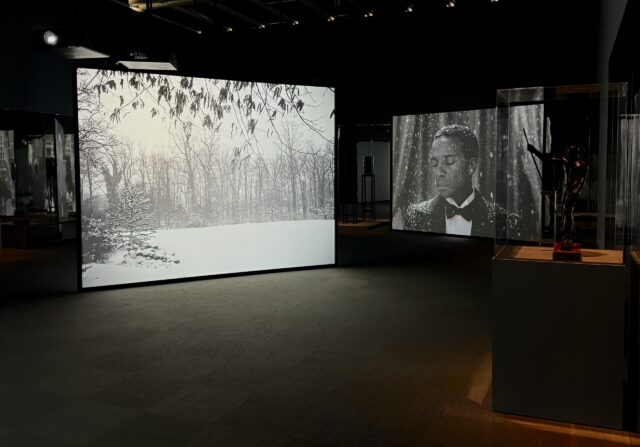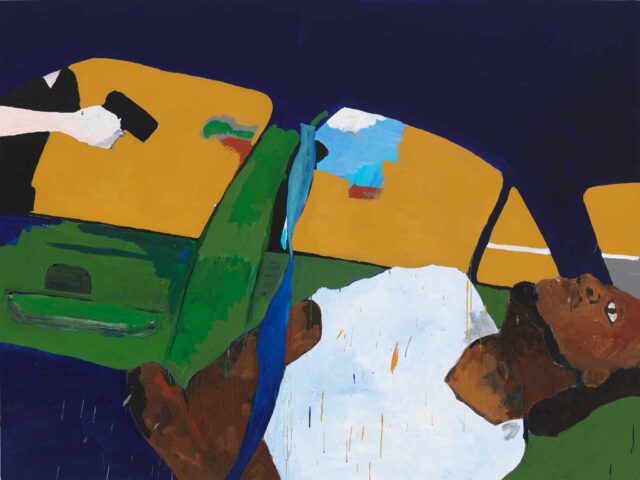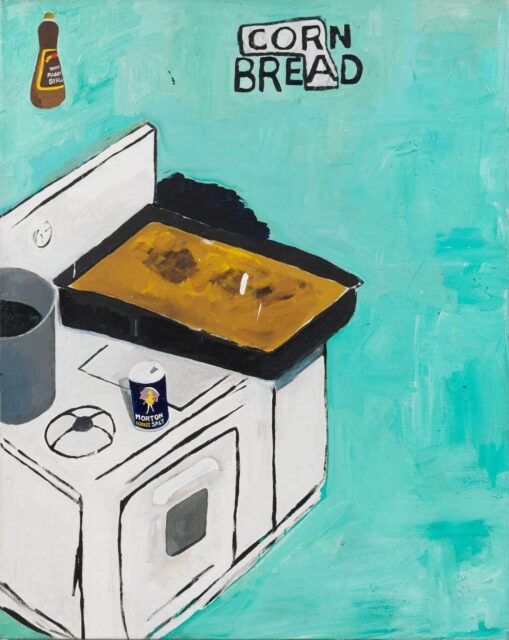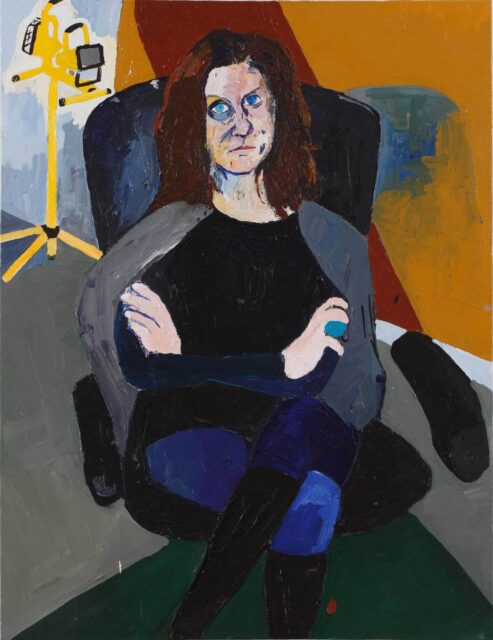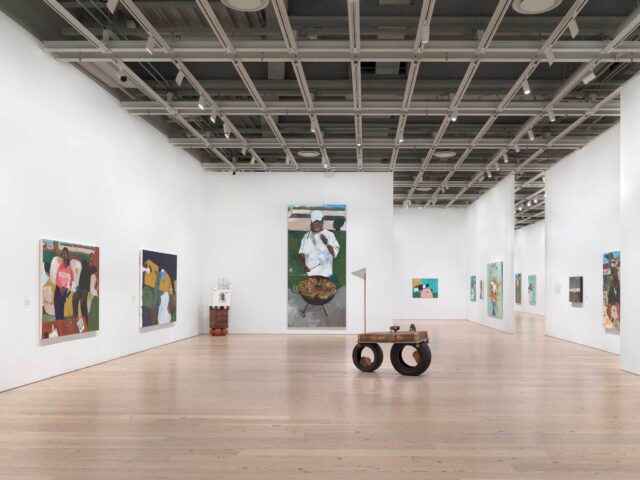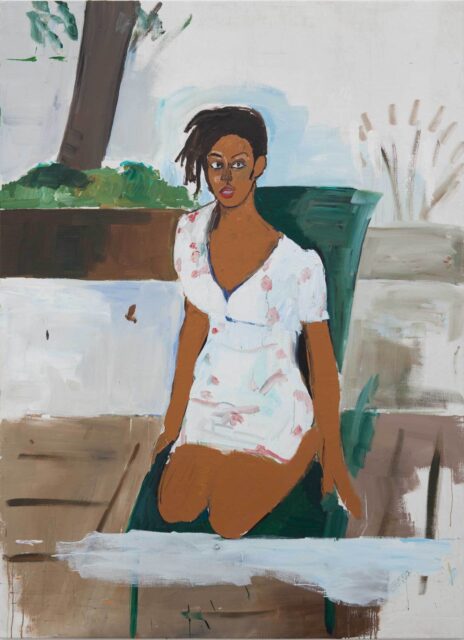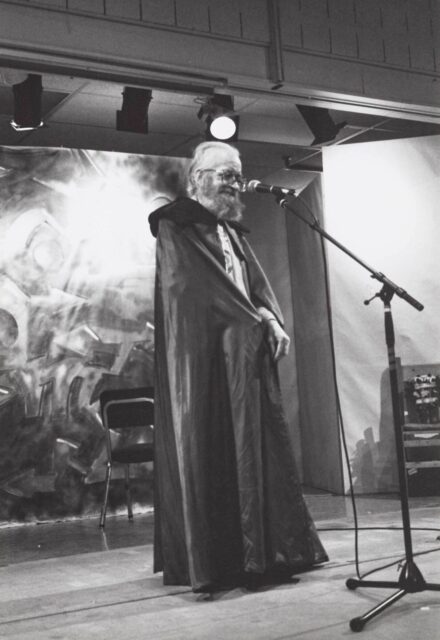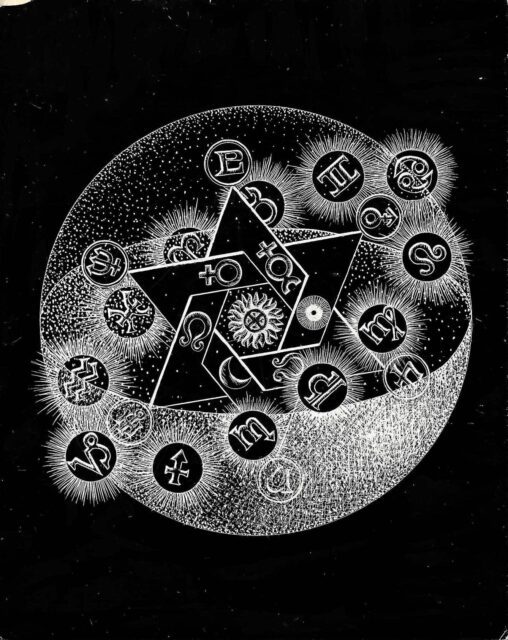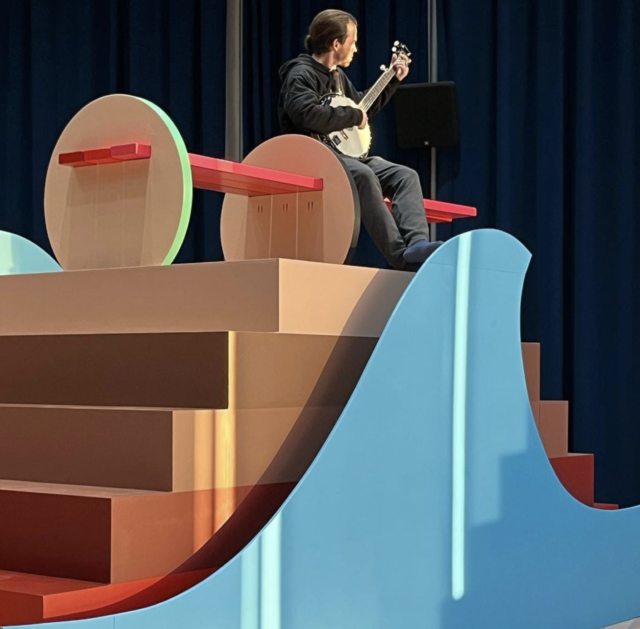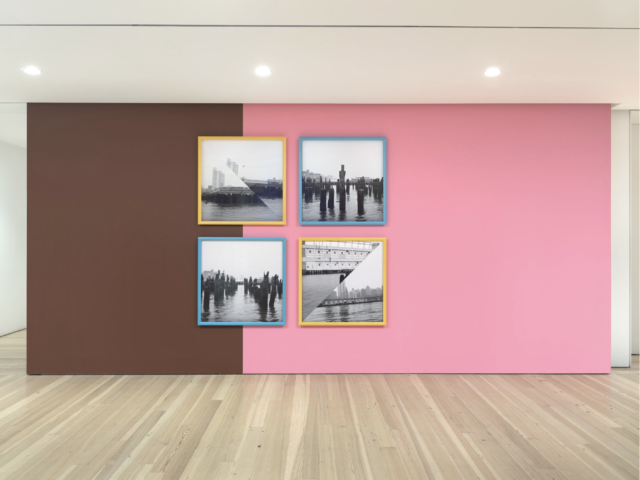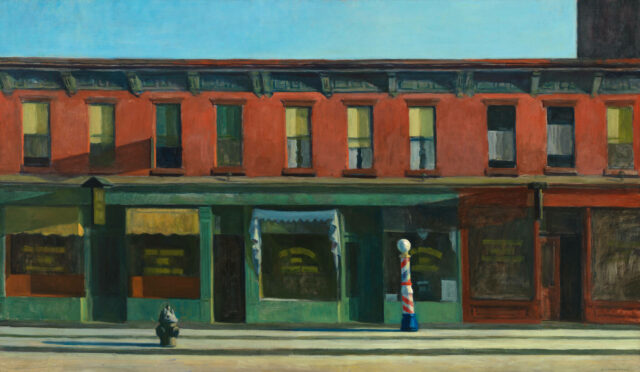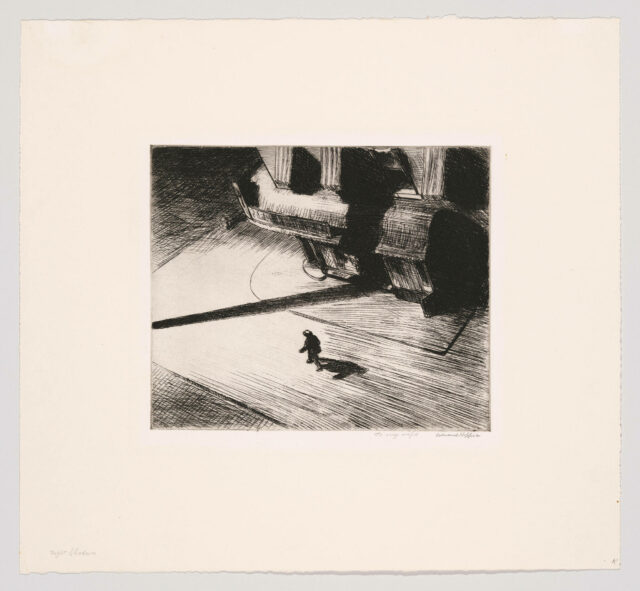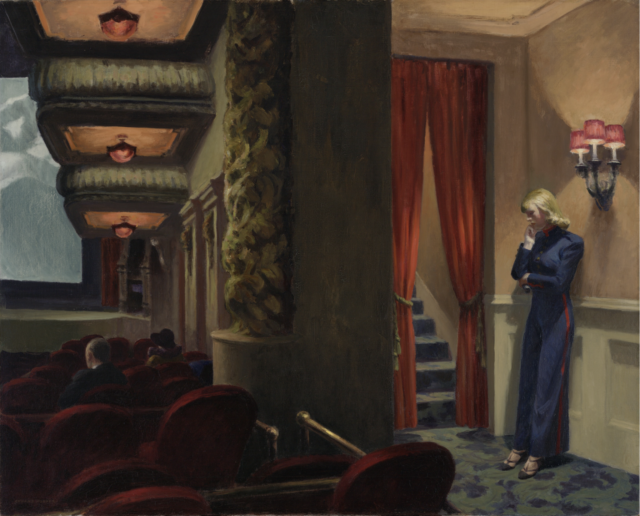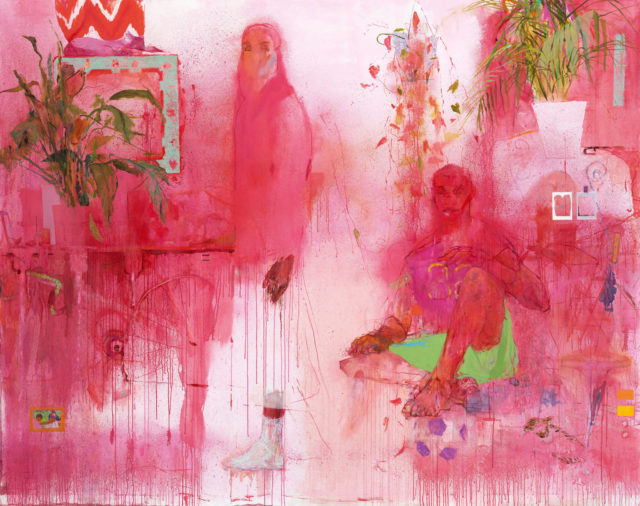
Carmen de Lavallade performs with Alvin Ailey at Jacob’s Pillow in 1961 (photo by John Lindquist)
EDGES OF AILEY
Whitney Museum of American Art
99 Gansevoort St.
Wednesday – Tuesday through February 9, $24-$30 (eighteen and under free; Friday nights and second Sundays free)
212-570-3600
whitney.org
“I’m trying to hold up a mirror to our society so they can see how beautiful they are, Black people, you know?” Alvin Ailey once said.
When I was in junior high, we were visited by Alvin Ailey American Dance Theater. I had never seen anything like it, certainly not in my all-white class on Long Island. It opened my eyes to a world of possibilities, now highlighted at the end of every year when I go see AAADT in their annual season at City Center. I was even pulled onstage once by Ailey dancer Belén Pereyra to join her and others for an audience participation section of Ohad Naharin’s Minus 16.
The continuing legacy of Alvin Ailey himself and his company is celebrated in the exhilarating exhibition “Edges of Ailey,” on view at the Whitney through February 9. The dazzling multimedia show features painting, sculpture, drawings, photography, postcards and letters, video, notebooks, posters, and more, along with a multichannel loop of rare archival footage of the troupe’s remarkable history, circling around the top of the gallery in an awe-inspiring video installation. The artworks are divided into such categories as “Blackness in Dance,” “Black Spirituality,” “Black Liberation,” “Ailey’s Collaborators/Nightlife,” and “After Ailey,” arranged in sections that encourage fluid but random movement; you can wander through at your own pace, following your own path.
The exhibit is supplemented by several vitrines filled with wonderful ephemera, from family photos, programs, and research notes to epistolary exchanges with Dudley Williams, Langston Hughes, and Ailey’s mother, Lula Cooper. The notebooks are utterly fascinating, with exciting and revealing notations, early drafts, intricately detailed schedules, and such quotes as “One must discover what the music is about + visualize it if possible.” and “Very important: The choreographer as storyteller / story inventor.”

Exhibit includes notebooks filled with intimate and intricate details of Alvin Ailey’s life and career (photo by twi-ny/mdr)
A handful of the pieces were created specifically for the show, while others date back to the 1860s. Among the artists represented are Carrie Mae Weems, Jacob Lawrence, Lorna Simpson, James Van Der Zee, Alma Thomas, Kevin Beasley, Elizabeth Catlett, Jean-Michel Basquiat, David Driskell, Purvis Young, Horace Pippin, Theaster Gates, and Lyle Ashton Harris. A poem by Nikki Giovanni, “Quilting the Black-Eyed Pea (We’re Going to Mars),” hangs on a long, narrow vertical panel. Three stark 1970 woodcuts by Aaron Douglas are titled Bravado, Flight, and Surrender.
In the center of the space is a daring untitled sculpture by David Hammons made of human hair, wire, metallic mylar, a sledge hammer, plastic beads, string, a metal food tin, panty hose, leather, tea bags, and feathers. Faith Ringgold’s United States of Attica map is in the red, black, and green colors of the Pan-African flag. One of the most poignant sections is “Black Women,” a gathering of such works as Emma Amos’s 1985 Judith Jamison as Josephine Baker, Elizabeth Catlett’s 1947 I Am the Negro Woman, Beauford Delaney’s 1965 Marian Anderson, Geoffrey Holder’s 1976 Portrait of Carmen de Lavallade, Kara Walker’s 1998 African/American, Mickalene Thomas’s 2024 Katherine Dunham: Revelation, and Karon Davis’s 2024 Dear Mama, paying tribute to Black women artists and performers — and, particularly, longtime Ailey dancer and artistic director Judith Jamison, on whom Ailey choreographed the 1971 solo Cry, a birthday present for his mother that he dedicated “to all Black women everywhere — especially our mothers.”
Ailey collaborator Romare Bearden’s “Bayou Fever” series is a colorful depiction of joy and movement. Choreographer and visual artist Ralph Lemon’s Untitled (On Black Music) consists of forty-one ink and watercolor on paper drawings, leaving one slot empty at the lower right. Video stations show performances by Jack Cole, the Katherine Dunham Company, Martha Graham, Duke Ellington, Lester Horton, Pearl Primus, and Ailey himself, including in the three-minute black-and-white A Study in Choreography for Camera, directed by Maya Deren and Talley Beatty.
Ailey was born in Texas in 1931 and died from an AIDS-related illness in New York City in 1989, at the age of fifty-four. He left behind a thrilling legacy of movement and music honoring the African American experience and supporting civil rights and social justice. It’s evident not only in the exhibition itself but in the accompanying program of live performances, which has already featured Ronald K. Brown and Matthew Rushing and continues November 7-9 with Yusha-Marie Sorzano’s This World Anew, November 16 with Bill T. Jones’s Memory Piece: Mr. Ailey, Alvin… the un-Ailey?, December 13-15 with Will Rawls’s Parable of the Guest, January 17-19 with Jawole Willa Jo Zollar’s Solo Voyages, January 24-26 with Excerpts from New Works, February 6-8 with Okwui Okpokwasili and Peter Born’s let slip, hold sway, and Ailey II: Harmonic Echo November 20-24, December 21-22, and January 22-26.

Hope Boykin’s Finding Free makes its debut at Ailey season at City Center (photo by Paul Kolnik)
ALVIN AILEY AMERICAN DANCE THEATER
New York City Center
131 West 55th St. between Sixth & Seventh Aves.
December 4 – January 5, $42-$172
www.alvinailey.org
www.nycitycenter.org
Before or after visiting “Edges of Ailey,” you must see the real thing, taking in a a show or two at Alvin Ailey American Dance Theater’s five-week season, its sixty-sixth, at New York City Center, running December 4 through January 5. As always, it’s a combination of world and company premieres, classic favorites by Ailey and other choreographers, and presentations with live music; many programs conclude with the AAADT’s masterpiece, the thirty-six-minute multipart Revelations.
“This season we celebrate the lineage and legacy of Mr. Ailey, highlighting his acclaimed works as well as new ballets by choreographers for whom he paved the way,” interim artistic director Matthew Rushing said in a statement. “As I look at the repertory for our season, I am reminded that dance is both a reflection of our past and a guide to our future. We are excited to welcome audiences this holiday season to be inspired by Ailey’s extraordinary artistry and rich story, as it continues to be written.”
“All New” evenings feature former Ailey dancer Jamar Roberts’s Al-Andalus Blues, set to music by Roberta Flack and Miles Davis; former company member Hope Boykin’s Finding Free, with an original jazz and gospel score by pianist Matthew Whitaker that he will perform live at several shows; Lar Lubovitch’s Ailey debut, Many Angels, which explores St. Thomas Aquinas’s question “How many angels can dance on the head of a pin?,” set to Gustav Mahler’s Symphony No. 5; and Rushing’s Sacred Songs, built around music from the original 1960 version of Revelations that was eventually edited out because of length.
There will also be new productions of Elisa Monte’s twelve-minute duet, Treading, and Ronald K. Brown’s spectacular Grace, which premiered at City Center twenty-five years ago. The opening night gala honors dance educator Jody Gottfried Arnhold with presentations of Grace with Leslie Odom Jr. and Revelations with a live choir.
Other highlights are Dancing Spirit, Brown’s tribute to Jamison; Roberts’s 2019 Ode; Elizabeth Roxas-Dobrish’s Me, Myself and You; Amy Hall Garner’s CENTURY; Hans van Manen’s Solo; Alonzo King’s Following the Subtle Current Upstream; and Kyle Abraham’s Are You in Your Feelings? Among the Ailey classics on the schedule are Memoria, A Song for You, Cry, and Night Creature. Saturday matinees are followed by Q&As with the dancers, which this year welcome newcomers Leonardo Brito, Jesse Obremski, Kali Marie Oliver, and Dandara Veiga and the return of Jessica Amber Pinkett; closing night will celebrate what would have been Alvin Ailey’s ninety-third birthday.
And to keep your Ailey fix rolling, you can stream the eight-part Ailey PBS documentary Portrait of Ailey here.
[Mark Rifkin is a Brooklyn-born, Manhattan-based writer and editor; you can follow him on Substack here.]
